The British Sports Car
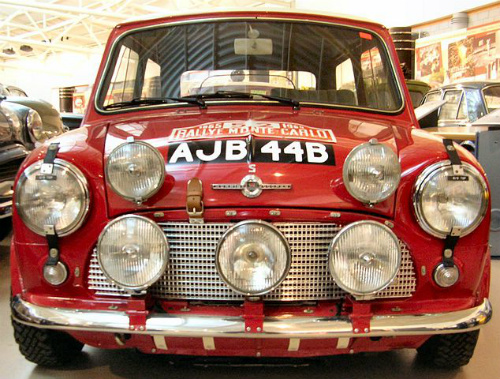
1964 Morris Mini Cooper S Winner of the 1965 Monte Carlo Rally
from Classic to Modern
British Racers On The Track
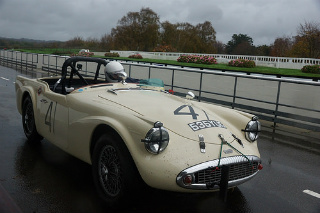
1959 Daimler SP250 Dart This 1959-64 2-seater used a 140 bhp, 2.5 litre V8 with a 124 mph top and 0-60 in 8.9 secs. A rare sight on the track. Seen here at the AC Owners' Club 2015 Clubman's MSA Sprint Meeting. Nice
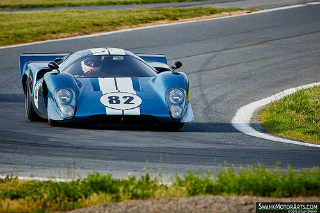
1969 Lola T70 Mk 3B The original T70 was an open top Mark 2 version, which was followed by the Mark 3 coupe variant and finally the slightly modified Mark 3B. A total of 100 T70's were built. What beautiful lines. Seen here during the 2015 Jefferson 500
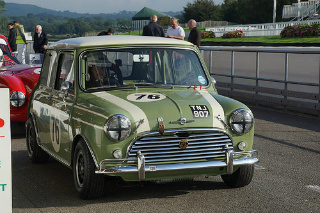
1965 Morris Mini Cooper S An impressive example that even retained the original bumper over-riders. Seen here, driven by Nick Smith, during the testing phase in the 2015 Goodwood Revival Meeting
The Mini Cooper
The British sports car. John Cooper, who built Formula One and rally cars, was well aware of the tuning potential of the A-Series engine used in the Mini.
After extensive discussion and collaboration, the Austin and Morris Mini Cooper sports car made their appearance in 1961.
The Morris Mini used an 848 cc engine. However, with tuning, and and giving it a longer stroke, the capacity could be increased to 997 cc. Power would increase from 34 bhp to 55 bhp.
The Mark 1 Mini Cooper had two SU carburettors, a close ratio gearbox, and front wheel disc brakes.
In 1964, the original 997 cc engine was replaced, in the Mark 2 Mini Cooper sports car, with one using a shorter stoke and a capacity of 998 cc.
In 1992, the Rover Mini Cooper used a 1275 cc engine, with fuel injection replacing the SU's.
Sales of the Mini Cooper were: 64,000 Mark 1 and 16,000 Mark 2.
Technical data Mk1 Mk2 Rover
Production: 1961-1964
1964-1969 1992-2000
Engine: cc 998 997 1275
Cylinder, bhp 4, 55 4, 55 4, 62
Top Speed mph 84 88 94
0-60 mph, secs 17.2 13.1 12.2
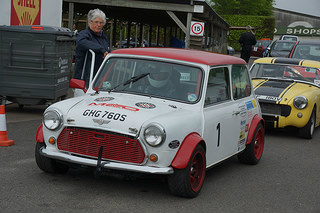
1978 Mini Cooper Seen at Goodwood
Full Scree Full Scree
The Mini Cooper S
In 1963, more powerful versions of the basic Mini Cooper made their debut under the name of Austin and Morris.
The first was the 1071 cc Mini Cooper S, with a modified crankshaft and stiffened main bearings, to allow for further tuning.
It had enlarged servo assisted disc brakes, and was designated the Mark 1 Mini Cooper S. It was built for only one year.
In 1964, the 970 cc Mini Cooper S was launched, designed for racing in the under 1000 cc class.
However, it was not popular, and was only manufactured for a year. It was designated the Mark 2 Mini Cooper S
On the other hand, in 1963, the 1275 cc Mini Cooper S was introduced, and was an immediate success, with continuous production until 1971.
There was a Mark 1, 2 and 3 version. This model was designed for racing in the under 1300 cc class
Sales of the Mini Cooper S were:
- 19,000 Mark 1 (combined 970, 1071 and 1275)
- 6,300 Mark 2 (1275 only)
- 1,570 Mark 3 (1275 only)
A Mini Cooper S sports car won the Monte Carlo Rally in 1964, 1965 and 1967.
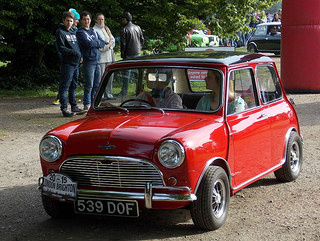
1961 Austin Mini Cooper S
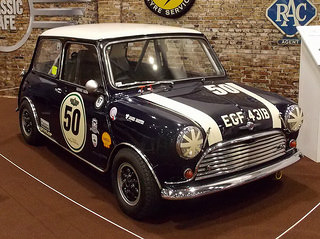
1963 Austin Mini Cooper S fitted with a 1293c.c. Swiftune Cooper S engine producing 136bhp
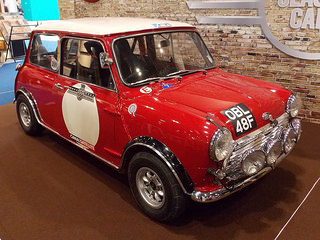
1967 Morris Mini Cooper S
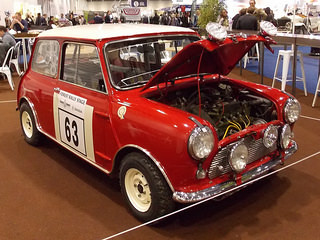
1963 Morris Mini Cooper S
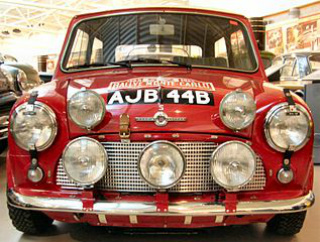
1964 Morris Mini Cooper S
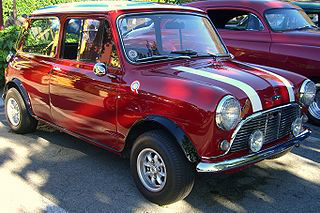
1963 Austin Mini 1275 Cooper S
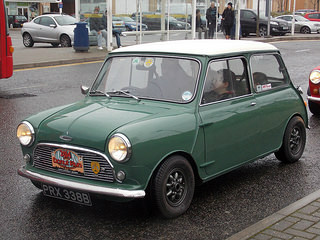
1964 Austin
Mini Cooper S
Technical Data 970 Mk 2 1071 Mk 1 1275 Mk 1-3
Production: 1964-1965 1963-1964 1963-1971
Output 963 4,030 20,307
Engine cc 970 1071 1275
Cylinder, bhp 4, 65 4, 70 4, 76
Top Speed mph 90 92 97
0-60 mph, secs 13.0 13.5 10.5
Full Scree Full Scree
Full Scree Full Scree
The Jensen Healey
When production of the Austin Healey 3000 sports car ended in 1967, there were discussions between Donald Healey and the carmaker Jensen.
From the resultant collaboration was born the Jensen Healey sports car.
At the prototype stage, a number of engines were evaluated from Vauxhall, BMW and Ford. However, none were acceptable.
Finally, Jensen approached Lotus who had a new, but untested engine which met the requirements.
It was a 2-litre, twin overhead cam, 16 valve, aluminium unit called the Lotus 907.
The result was offered as a two seater convertible or coupe, with front disc brakes and rear drums. It used coil springs at the front, and a rear live axle.
European export models had two, twin choke carburettors, whilst US models had a single Stromberg, for emission requirements.
The Jensen Healey was popular in the US, but less so in the UK. A total of 3,777 were sold.
To offset financial difficulties, the Jensen Healey GT was introduced in 1975. It was a 2+2 coupe with a limited rear view.
Jensen went into receivership in 1976.
Technical data Jensen Healey GT
Production: 1972-1976 1975-1976
Output 10, 498 509
Engine: cc 1973 1973
Cylinder, bhp 4, 144 4, 140
Top Speed mph 119 120
0-60 mph, in secs 8.1 7.9
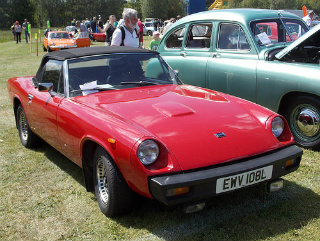
1973 Jensen-Healey This eye-catching example was spotted at the 2015 Bromley Pageant of Motoring in Kent
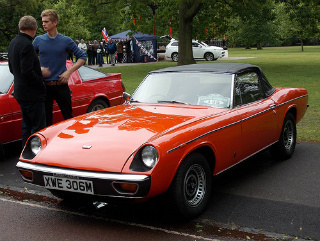
1973 Jensen Healey This imposing classic was seen during the 2015 London to Brighton Classic Car Run
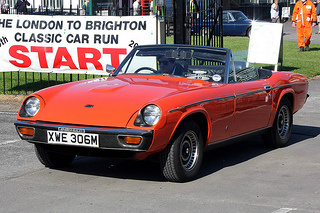
Jensen Healey Image
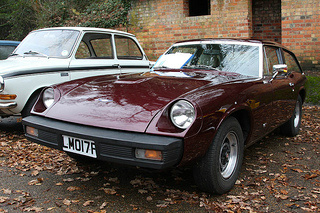
Jensen Healey GT Image
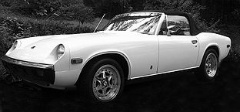
Jensen Healey Image
Jensen Healey
The Jensen Interceptor
In 1966, the Jensen Interceptor sports car was launched.
It was offered as a two door, four seat hatchback, convertible or coupe.
The Mark 1 version used a 6.3 litre (383 cu in) Chrysler V8 engine, developing 325 bhp.
It had a distinctive, very large, wrap around rear window that also acted as a tailgate. It had disc brakes on all wheels, independent front suspension, and rear leaf springs.
In 1969, the Mark 2 was introduced with styling that was slightly revised.
In 1971, a larger Chrysler 7.2 litre (440 cu in) V8 engine was used with three, twin choke carburettors, developing 330 bhp.
This version of fuel delivery was called the SP, and was also available on the 6.3 litre engine, developing 385 bhp.
In 1972, the 7.2 litre engine now used a single 4-barrel carburettor.
In 1973, the Mark 3 had further minor styling changes.
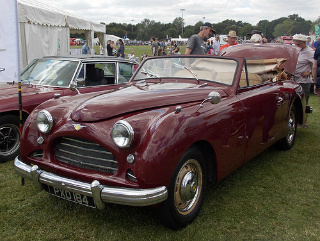
1954 Jensen Interceptor Convertible With its distinctive styling, it used a 3993 cc straight-6 engine with a top of 95 mph and 0-60 in 17.8 secs. In 1953, renowned driver Briggs Cunningham raced an Interceptor with a Chrysler engine
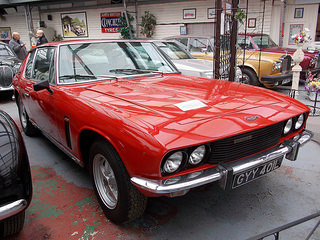
1973 Jensen Interceptor Mk 3 This 2+2, 135 mph beauty was powered by a 7.2 litre V8. Its huge fuel consumption during the fuel crisis marked its demise
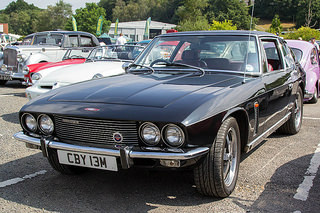
1974 Jensen Interceptor 3
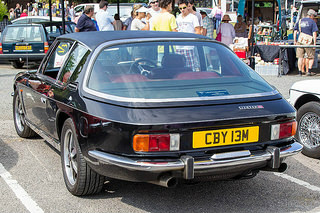
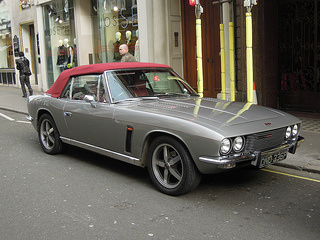
Jensen Interceptor Convertible
Technical data Mark 1/2 SP Mark3
Production: 1966-1969 1971-1973 1971-1976
Engine: cc 6276 6276 7212
Cylinder, bhp 8, 325 8, 385 8, 330
Top Speed mph 139 145 135
0-60 mph, in secs 6.5 6.9 7.5
|
Full Scree |
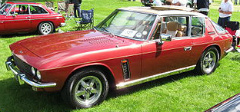 Jensen Interceptor Image |
The Jensen 541
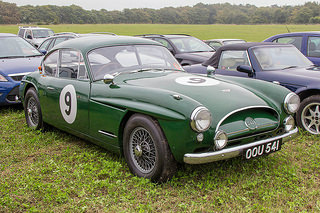
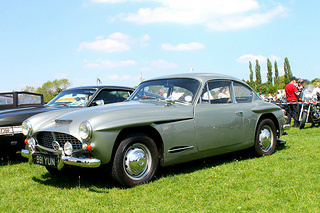
Jensen 541 The 1954-59, 109 mph/0-60 in 10.8s, was powered by a 4l, straight-6, 3 SU carb Austin engine. Only 226 made. This smart example was seen at the Chiltern Hills Classic Car Show
Jensen C-V8
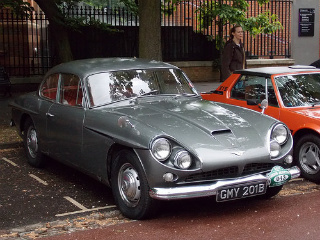
1964 Jensen C-V8 The distinctive lines of this unique classic
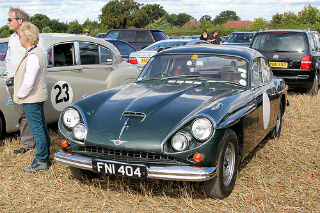
1963 Jensen CV-8 Mk 1 This very smart example was spotted at the 2013 Shere Hill Climb near Guildford in Surrey
The Daimler Dart
By the late 1950's, the luxury carmaker Daimler was in financial difficulties.
As a result, the company decided to enter the US sports market with their own model.
Hence, the Daimler Dart, later known as the Daimler SP250, was born. The "SP" referred to Sports, and the "250" to its 2.5 litre engine.
Launched at the New York Auto Show in 1959, it was well received.
It was described as a 2+2 sports car, with a fibreglass body on a steel chassis.
Its engine was an all new 2.5 litre, hemispheric combustion chambered, overhead valve, V8 unit, with two SU carburettors.
The chassis in the original A-spec sports car had a tendency to flex on hard cornering, causing the doors to open.
However, this was rectified in 1960 with the introduction of the B-spec car.
In 1963, the C-spec version appeared, with luxurious extras as standard.
Daimler was acquired by jaguar in 1960 and, sadly, since the Daimler Dart had to compete with the E-Type, it wan't given the attention it deserved, which had an adverse affect on sales.
Technical data
Production: 1959-1964
Output: 2,645
Engine: cc 2547
Cylinder, bhp 8,
140
Speed mph 124
0-60 in secs 8.9
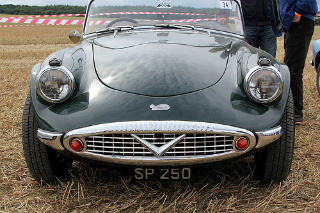
1960 Daimler SP250 Dart A tasty close up shot of this emotive sports car
Daimler SP250 Dart Presented in its full glory amongst other classics
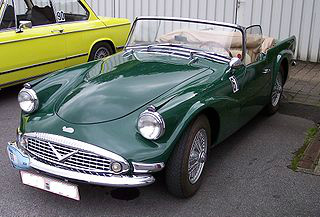
Daimler Dart Image
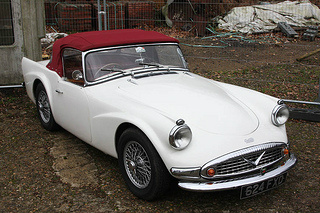
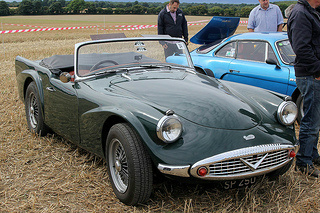
Daimler Dart Image
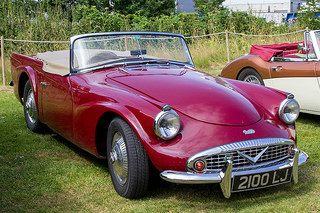
Daimler Dart SP250 Image
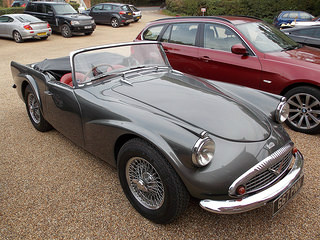
1962 Daimler SP250 Dart
Full Scree
The McLaren F1
In 1988, a simple drawing of a three seater sports car formed the basis for creating the ultimate sports car. Hence was born the F1.
In 1992, the McLaren F1 was presented at The Sporting Club in Monaco.
It used a glass fibre monocoque chassis.
It was decided that the engine should be normally aspirated since turbochargers and superchargers added a degree of complexity which might affect the drivers' level of engine control .
The final choice of engine was a BMW 6.1 litre, V12. It used an aluminium block and cylinder head, four overhead camshafts, and variable valve timing.
The road version had a compression ratio of 11.1.
In 1998, the McLaren F1 was the world's fastest road car, reaching 231 mph, with its revs limited, and 243 mph when able to rev freely.
Only 106 F1's were manufactured:
- 64 of the standard street version (F1)
- 5 were tuned versions (LM's), referring to Le Mans
- 3 were road cars (GT)
- 5 were prototypes (XP)
- 28 were race cars (GTR)
- 1 was an LM prototype
Technical data
Production: 1992-1996
Output: 106
Engine: cc 6064
Cylinder, bhp 12, 618
Top Speed mph 243
0-60 mph, in secs 3.2
0-100 mph, in secs 6.3
0-150 mph, in secs 12.8
0-200 mph, in secs 28
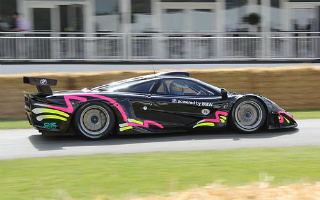
McLaren F1 GTR Longtail This striking shot of the 197 mph/BMW 6 litre V12 racer was taken at the 2014 Goodwood Festival of Speed
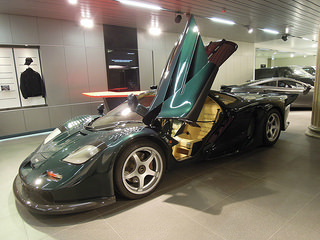
McLaren F1 Longtail Seen at the opening of McLarens Stockholm showroom
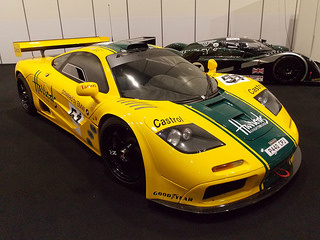
1996 McLaren F1 GTR
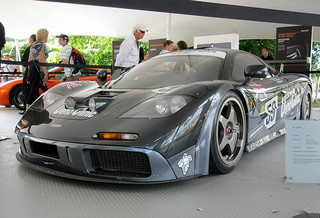
McLaren F1 GTR Image
Full Scree Full Scree
Other McLaren Racers
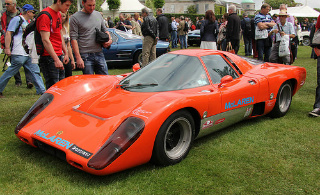
1969 McLaren M12 GT Prior to his death in 1970, Bruce McLaren intended this to be the world's fastest road car. It used a 370 bhp. 5.7 litre Chevrolet V8 with a 180 mph top and 0-60 in 4.2 secs. Seen here at Goodwood. A real looker
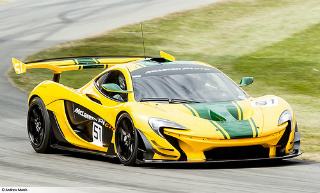
McLaren P1 GTR This excellent shot was taken at the Goodwood Festival of Speed 2015
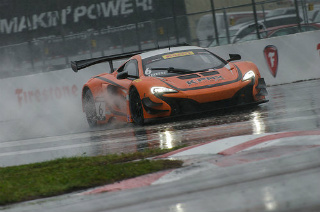
McLaren 650S GT3 Action shot taken at the Firestone Grand Prix in St. Petersburg 2015
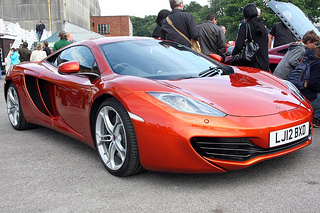
McLaren MP4-12C
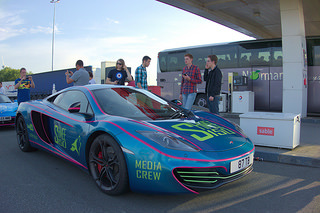
McLaren MP4 12C
Above is a small selection of some classic British sports cars
.
see All My Reviews
Got any stories about Your Favourite British Sports Car?
SPORTS CAR LINKS

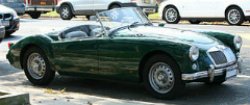



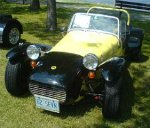



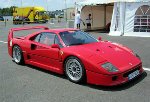
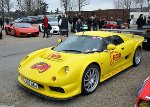



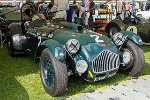
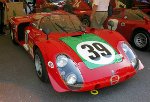


SPORTS CAR LINKS END
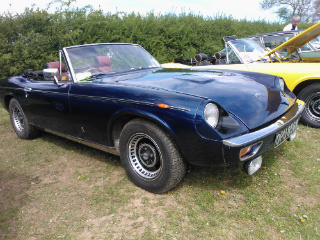
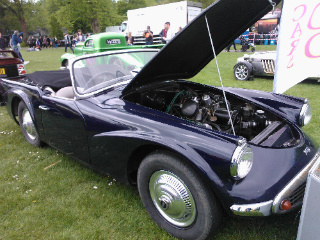






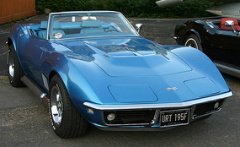
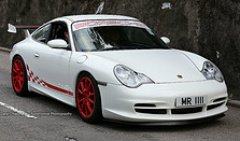
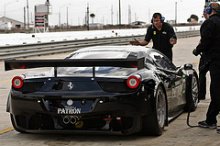
New! Comments
Have your say about what you just read! Leave me a comment in the box below.